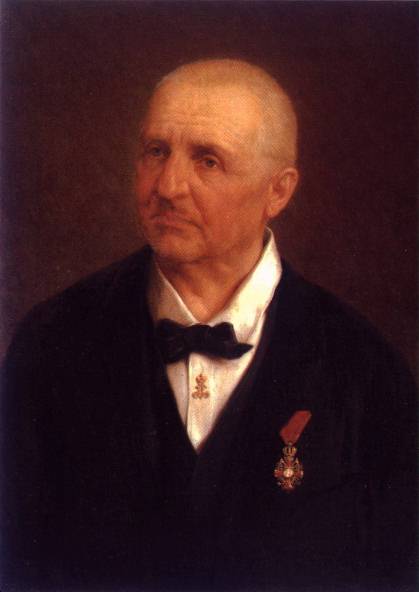- Symphony No. 7 (Bruckner)
Infobox Bruckner Symphony
title = Symphony No. 7 in E major

dedication =Ludwig II of Bavaria
composed = 1881 - 1883
1885
first_performance =Arthur Nikisch , 30 December 1884, Stadttheater, Leipzig
first_published = 1885
other_editions = ed. Robert Haas, 1944
ed. Leopold Nowak, 1954
first_recording =Oskar Fried ,Berlin Staatskapelle , 1924Anton Bruckner 's Symphony No. 7 in E major is one of his best known symphonies. It was written between1881 and1883 and was revised in1885 . It is dedicated toLudwig II of Bavaria . The premiere, given underArthur Nikisch in the opera house atLeipzig in1884 , brought Bruckner the greatest success he had known in his life. The symphony is sometimes referred to as the "Lyric", though the appellation is not the composer's own, and is seldom used.Description
The symphony has four movements:
#"Allegro
moderato "E major .
#"Adagio. Sehr feierlich und sehr langsam"C-sharp minor . Legend has it that Bruckner wrote the cymbal clash at the climax of this movement at the precise moment on hearing the news that Wagner had died.
#"Scherzo. Sehr schnell"A minor .
#"Finale. Bewegt, doch nicht schnell" E major. In the recapitulation, the subject groups are reversed in order (a form sometimes called "tragic sonata form").Versions
1883 version
This was the version performed at the work's premiere. Unfortunately it survives only in one autograph copy which includes later changes by Bruckner and others, so the exact contents of this version are lost unless new manuscripts are found. This version is unpublished.
1885 version
Gutmann edition (published 1885)
Some changes were made after the 1884 premiere but before the first publication by Gutmann in 1885. It is widely accepted that Nikisch,
Franz Schalk andFerdinand Löwe had significant influence over this edition, but there is some debate over the extent to which these changes were authorized by Bruckner. These changes mostly affect tempo and orchestration.Haas edition (published 1944)
Robert Haas attempted to remove the influence of Nikisch, Schalk and Löwe in order to retrieve Bruckner's original conception of the symphony. Haas used some material from the 1883 autograph but because this autograph also includes later changes much of his work was the product of conjecture. The most prominent feature of Haas's edition is the absence ofcymbal s, triangle andtimpani in the slow movement: Haas asserted that Bruckner decided to omit the percussion, a claim scholar Benjamin Korstvedt deems "implausible". [citation
first=Benjamin M.
last=Korstvedt
contribution=Bruckner editions: the revolution revisited
editor-first=John
editor-last=Williamson
title=The Cambridge Companion to Bruckner
publisher=Cambridge University Press
isbn=0521008786
date=2004
pages=127
url=http://books.google.com/books?id=ZDPCd_3Zg0gC&pg=PA127&vq=%22implausibly%22&dq=bruckner+seventh+symphony+cymbals&as_brr=3&sig=H_8PT_qEk04gQZHR0o_f03rD2HI]Nowak edition (published 1954)
Leopold Nowak kept most of the changes in the 1885 Gutmann edition, including the percussion. He reprinted the tempo modifications from Gutmann but placed them in brackets. Some performances of this edition omit the cymbal clash at the climax of the slow movement, although it is included in the printed score.An arrangement of this symphony for chamber ensemble (consisting of 2
violin s,viola ,cello , bass,clarinet , horn,piano 4-hands, andharmonium ) was prepared in 1921 by students and associates ofArnold Schoenberg , for the Viennese "Society for Private Musical Performances ":Hanns Eisler (1st and 3rd movements),Erwin Stein (2nd mvt.), andKarl Rankl (3rd mvt). The Society folded before the arrangement could be performed, and it was not premiered until more than 60 years later.Instrumentation
The symphony requires an instrumentation of one pair each
flute s,oboe s,clarinet s,bassoon s, with four horns, threetrumpet s, threetrombone s, and a quartet ofWagner tuba s, along with a contrabass tuba,timpani and strings, and possiblycymbal s and triangle.Except the third movement, usage of percussion in the symphony is extremely limited. The timpani enters the symphony at the coda of the first movement. In some performance editions, the timpani reenters along with cymbals and triangle together in the climax of the second movement. (Many conductors have taken to performing the second movement without percussion, however, and the decision is generally settled by the performers' preferences.) In the last movement, the timpani rolls in brief climaxes before crescendoing with orchestral tutti in the final bars.
Use by Hitler
According to Frederic Spotts's "Hitler and the Power of Aesthetics",
Adolf Hitler compared this symphony favorably with Beethoven's Ninth Symphony. When he consecrated a bust of Bruckner atRegensburg 'sWalhalla temple in1937 , the Adagio from the Seventh was played as Hitler stood in quiet admiration, a widely photographed propaganda stunt. Ironically, a recording of the Adagio was played before AdmiralKarl Dönitz announced Hitler's death on Radio Berlin onMay 1 1945 .Discography
The first commercial recording was made by
Oskar Fried with theBerlin State Opera Orchestra in 1924 forPolydor . Along with the Fourth, the Seventh is the most popular Bruckner symphony both in the concert hall and on record.There is no dearth of fine recordings of Bruckner's Seventh.
Herbert von Karajan 's last recording with theVienna Philharmonic , 23 April 1989, three months before his death, on theDeutsche Grammophon label, of the Haas edition of the 1885 score, has been singled out byNorman Lebrecht as #80 in his list of the 100 best recordings. [Norman Lebrecht, "Masterpieces: 100 Milestones of the Recorded Century" "The Life and Death of Classical Music". New York: Anchor Books (2007): 252 - 253] In reviewing the 1999 recording byKurt Sanderling , the critic David Hurwitz listed as reference (benchmark) recordings of Bruckner's Seventh those byEugen Jochum in 1952,Bernard Haitink in 1978, Karajan in 1989, andGünter Wand in 1999. [http://www.classicstoday.com/review.asp?ReviewNum=2937]References
External links
*IMSLP2|id=Symphony_No.7_in_E_major_%28Bruckner%2C_Anton%29|cname=Symphony No. 7
* [http://www.dlib.indiana.edu/variations/scores/alr4543/index.html Free score (Gutmann edition)] from the Indiana University school of music
* [http://www.npr.org/templates/story/story.php?storyId=6423446 Finale from Symphony No. 7 on an NPR segment]
* [http://www.abruckner.com/discography/symphonyno7inemajo/ Discography]
Wikimedia Foundation. 2010.
